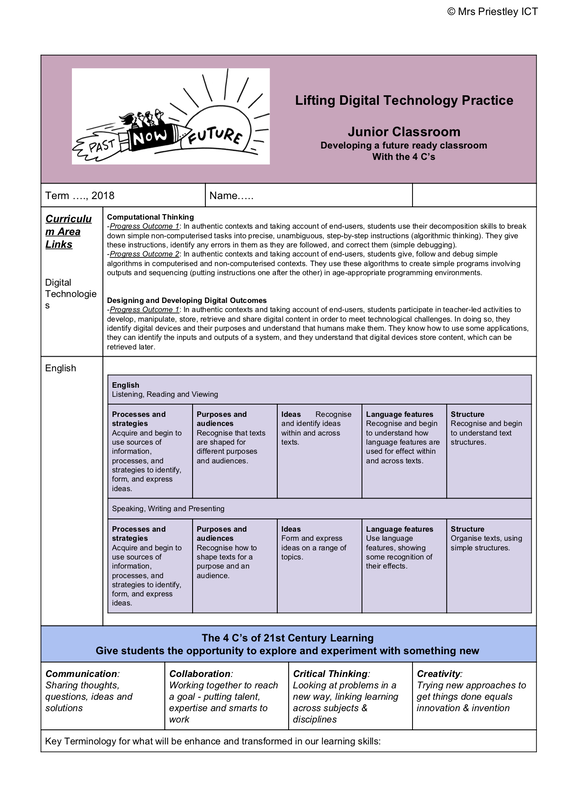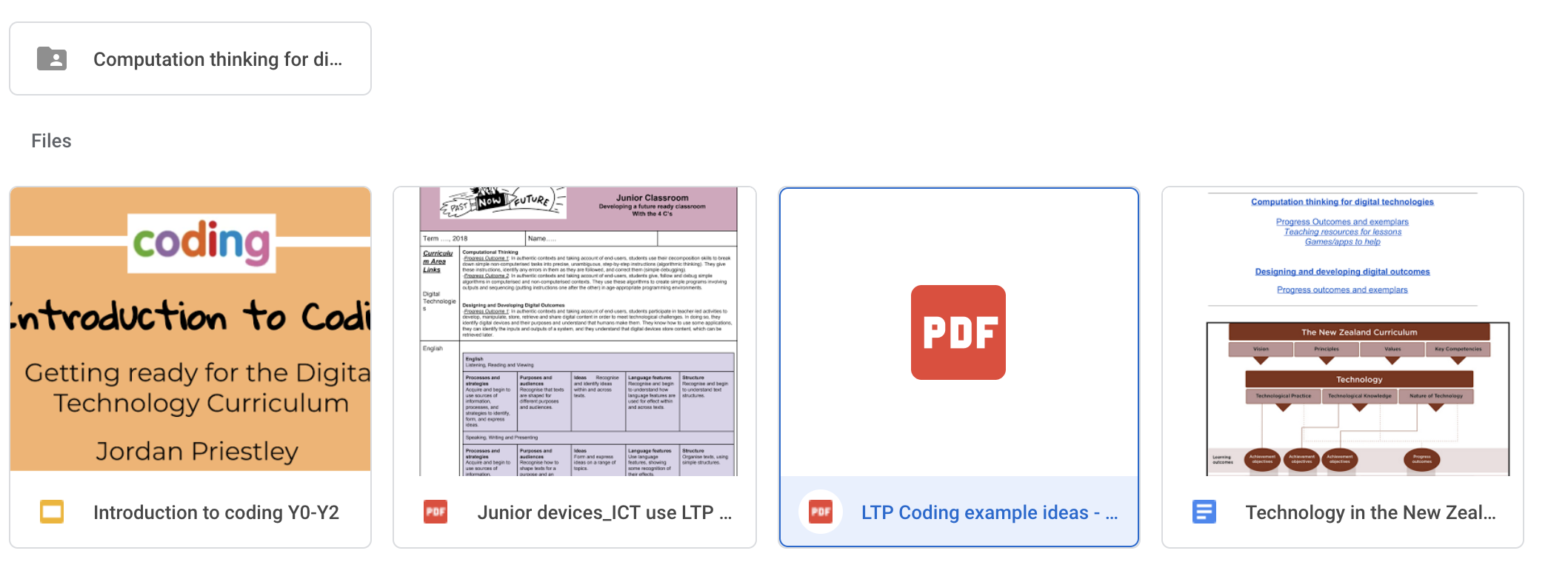Last year I created this slide deck for a staff meeting in my Junior Team with a recording of it attached above. This is just a youtube of the slide deck if you prefer to listen rather than read. The slides show how easily you can break down those tricky key terms in your practice or classroom. Above are two plans that I created for my team also. The first plan is a junior devices ICT use LTP that provides ideas, tips and links to a range of things that can be taught in the classroom in all ICT areas. The second plan is a junior coding LTP that provides ideas, links and resources for teaching coding in a junior classroom. Both of these are in pdf form but can be moved into google docs form. Please do not share these files without permission - you are welcome to share the link to this post. Both of these were created by myself and full credit needs to be left at the top if in use. There are plenty of other resources available including more that I have created in this folder link (pictured above). These include specific examples to the Digital Technologies curriculum that can be used in your classroom.
When sharing, please share the link to this post when sharing the links. Please do not recreate any of the information or planning you find - both of these were created by myself and full credit needs to be left at the top if in use.
2 Comments
Find the slide deck to these pre-made templates here. Simply make a copy for yourself or just download which slide you want to use. Upload it to Seesaw and create an activity with that for your students to complete.
Check out my other slides for use with Seesaw here.
Once we had talked about the expectations and guidelines for the 'ask me' buddy we put it into practice with our first 'ask me' buddy of the week. She did such a great job and students really enjoyed going to her rather than me! It also freed me up a little bit to work with other students and stopped the constant interruptions with silly questions.
I can see the potential this has within the classroom and will update you on how it is going over the year. My students love being responsible and this type of classroom job will really help build responsibility of everyone in the classroom. Want a copy of the 'ask me' buddy lanyards? Download it from the VIP access section.
Every year, I always begin teaching the Daily 5 activities slowly and in tumble form. This helps students to learn what is happening in each one and form routines/expectations within literacy time. From term 2 onwards I usually implement my Daily 5 task card in place of a tumble. How does it work? Students get to choose their own activities within reading time without teacher direction. Students receive their own Daily 5 checklist board (like pictured above) with a little picture of themselves on their one. This type of learning in reading time promotes student agency of their choices in learning, builds responsibility for their actions and is fun - no more teacher telling them what to do! As i teach Year 3 students I chose to implement a practice version of this in the last week of school. This has helped my students see and know what is coming next term but also have a practice with it. This helps form new routines but practicing the expectations of how it will change. It really has been a great way to move from the tumble based programme to their own choice and would recommend doing a practice before hand to help with those routines. My students are so excited to begin their real task cards next term after the holidays and I can't wait to see their ownership and responsibility of their learning shift from being teacher led to student led.
Check out this quick video below to see it in action on an ipad! This resource can be purchase off my website here on from my Teachers Pay Teachers Store.
|
AuthorMrs Priestley ICT blog is a place to read, download and view ideas! Archives
February 2024
Categories
All
|














 RSS Feed
RSS Feed
